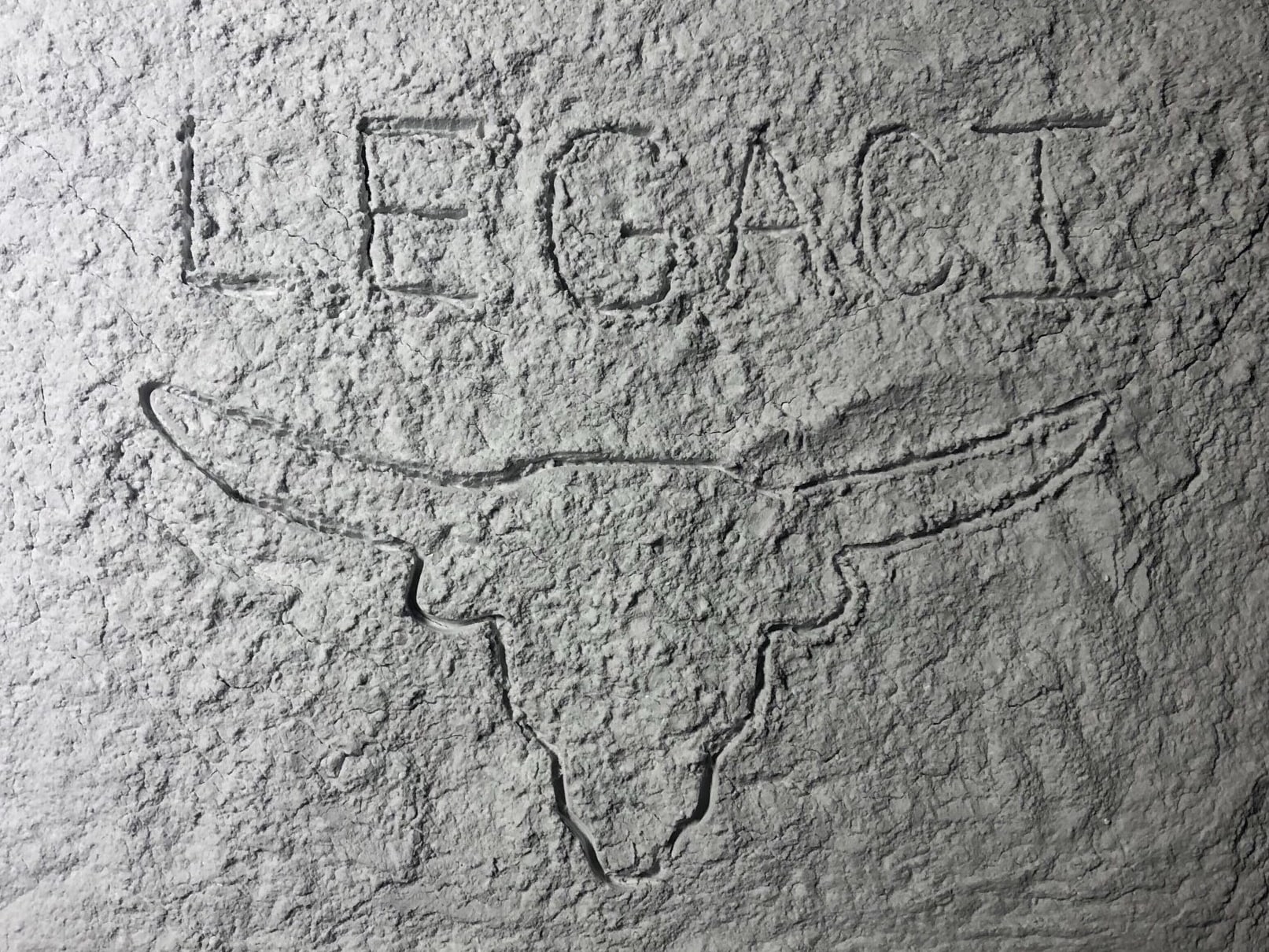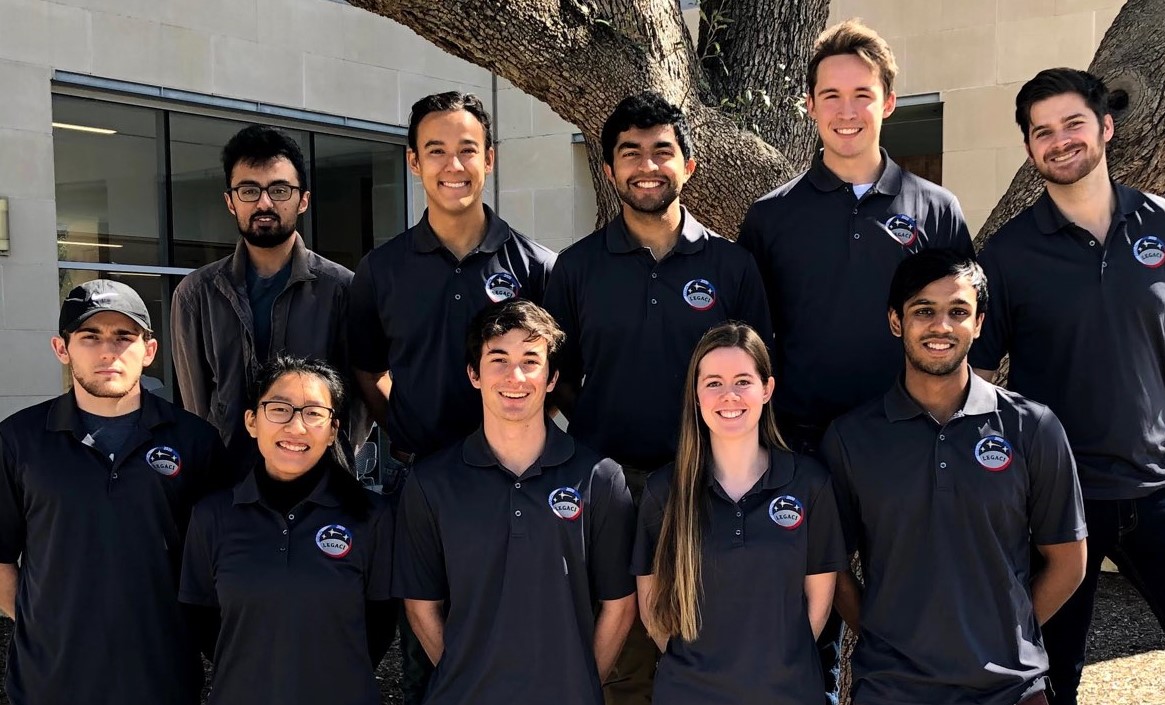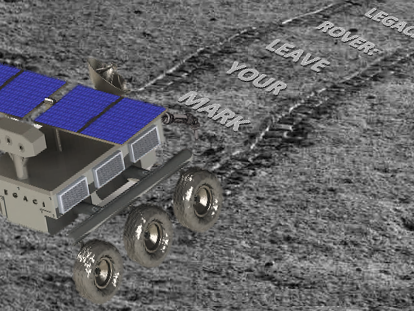
Most humans will never set foot on the moon, but a group of students from the Cockrell School of Engineering have an intriguing idea to let anyone make their mark there. The project, a rover that could write short messages on the surface of the moon, was recently recognized as part of a NASA design contest.
Project LEGACI won two awards at NASA’s RASC-AL (Revolutionary Aerospace Systems Concepts Academic Linkage) annual design competition. The team won in their theme category, Commercial Cislunar Space Development, and won the Excellence in Commercial Innovation Award. The students’ plan includes building a rover complete with a robotic arm that can, in just a matter of minutes, write personalized messages on the moon’s surface and capture photographs of the etchings.

The 10 students were seniors in the Department of Aerospace Engineering and Engineering Mechanics when they developed the project and graduated in May 2020: Samuel Adams, Ali Babool, David Baier, Brianna Caughron, Jack Davidson, Justin Ganiban, Kevin Hicks, Akshat Ramadurai, Nader Syed and Rebecca Wang. They took two consecutive courses taught by lecturer Adam Nokes. LEGACI — short for Lunar Engraver with Geologic Autonomous Carving Instrument — was their capstone project.
“I am so proud of the work my team has done this year to achieve this great honor,” said Caughron, the team leader. “I want to thank them and our faculty advisor for all the effort they have put into our project that helped us be successful. I never imagined an idea I had walking back to my apartment after class last fall could turn into something so rewarding and meaningful.”
But this is not your average class project. The pitch deck for LEGACI includes nearly 120 slides, that detail everything from the specifications of the rover, to revenue and cost projections, to a timeline for future operations.

The idea is compelling enough on its own, but looking at the financials the team put together to help this theoretical company blast off adds another layer of intrigue. LEGACI doesn’t charge by the hour, but by the second. Customers would pay $9.99 per second the rover spends carving images. One example, the company name along with the UT longhorn silhouette, took 45 seconds, bringing the total cost to $449.55.
“At first glance, this concept seemed a little out of left field,” Syed said. “But thanks to months of work by people I was lucky enough to be on a team with, it became tangible. Real. And I think that’s engineering in a nutshell — making an idea real, something out of nothing. I’m really proud of this project and this team, and I know I’ll remember this for a long time.”
The team expected the average moon message to cost between $500 and $600. And they noted that the average tattoo costs between $250 and $800, and four out of 10 adults have one, a sign that there’s a market for that level of spending.
The presentation shows a number of different products that could be created from a lunar etching, including digital prints, canvas prints, journals, buttons, shirts, socks, phone cases and more. And the team included an upfront list of types of messages that wouldn’t be allowed: No profane or racial statements, no political language and nothing slanderous or lewd.
The students see massive earning potential from LEGACI. The project would lose money for the first few years, due to the costs of building the rover and launching it. But by 2026, the team projects LEGACI could bring in about $610 million in annual revenue and profits of about $450 million.
With such rosy projections, including the possibility that LEGACI could become a $10 billion business by 2030, will the team attempt to make the idea into a full-fledged space startup? It’s certainly a high price tag to launch the project, but the students indicated they might start looking for an angel investor, Nokes said.
